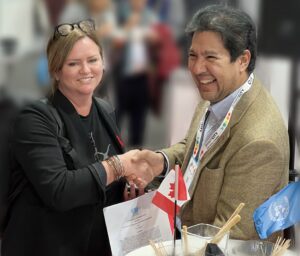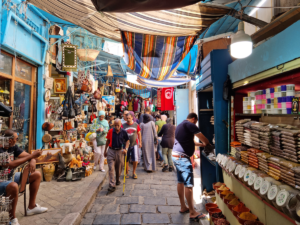When local communities experience recurring shocks and emergencies, they build community resilience and ultimately become better prepared for future events. But when they are displaced or broken up, that resilience is lost.

Petrópolis, a planned city in the valley of the Rio de Janeiro state of Brazil, is a recurring disaster zone due to water-related issues. Owing to the recurring shocks they face, local populations have acquired collective knowledge, risk awareness, and memory of emergencies. This knowledge includes an in-depth understanding of how to anticipate and identify risks, and how to act. Unfortunately, this knowledge is also associated with trauma and loss.
“It’s going to rain and the ‘little field’ will go all the way down…!” – neighbours referring to the probability of a mudslide happening there.
However, the awareness and knowledge are not universally spread across the population and many in the community continue to, or are forced to, live in high-risk areas with limited understanding. This is particularly true of newcomers, as one local resident highlighted,
“My parents worked as housekeeps and managed to save a little money to buy a house in the middle of the hill… we didn’t know about the risk, nobody told us.” – Patrícia
According to the World Bank, today, around 56% of the world’s population lives in cities. This number is expected to double its current size by 2050. Latin America is the most urbanized region in the world. Since the 1950s, the proportion of its population living in cities has grown from 40 to 80 percent, as reported by UN DESA in 2018. Brazil has the highest rate of urban population growth in Latin America, having more than 80% of its population in urban contexts in 2015.
As cities continue to grow rapidly and urban sprawl pushes more people into high-risk zones, Patrícia’s reality is a current one for many urban residents. Community resilience, defined as the ability to adapt and move on with more strength after adversity, is a critical response to reduce the negative impact of this trend, but it is not always enough.
The flooding in the city in February 2022 caught many residents by surprise, being the worst flood, even many long-term residents, had ever witnessed. Owing to the gravity of the situation, responses across neighbourhoods vary, but many of those most affected by the mudslides were displaced to new residences. The knowledge of mudslides was displaced with them, and the social capital that had been built upon over many years was dissolved. Furthermore, the displacement added further trauma to the loss of the community, leaving little or no space for resilience building.
During the same flood episode, the community of Corrêas was not displaced and could largely remain in their homes. Consequently, there was no social resilience or local knowledge loss, and the solidarity among neighbours remained strong. By comparing interviews with local residents from displaced and not-displaced residents, the latter highlighted that the experience was less traumatic given that they were able to stay in their homes and communities. In fact, many highlighted that the event strengthened their social capital.

The impact of disasters varies from one neighbourhood to another, but when asked about the need for disaster prevention, all city residents highlighted measures that should be taken by the public administration to create a new master plan for Petrópolis that encompasses disaster risk reduction in the urban layers of the city. Furthermore, they underlined the importance of community resilience and the role of the population in maintaining and preserving the natural features of the hills of Petrópolis: natural water sources, waterways, rivers, and forests.
The experiences in these two neighbourhoods in Petrópolis highlight the presence of social resilience in communities and the importance of keeping communities together and on-site in post-disaster recovery. With the increasing severity of disasters, community resilience alone will not be enough to avoid losses, but it should be a central consideration for post-recovery.





